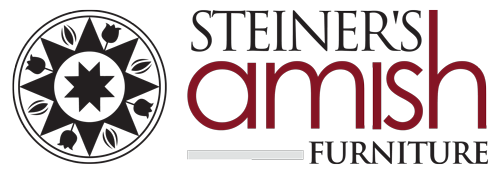There’s a trend growing in interior design: Live Edge Furniture. You’ve probably heard of it before or even seen a few pieces on your favorite design show. With its popularity increasing, you may be asking yourself: what exactly is live edge furniture? Well, look no further; this blog has the information you need.
 What is Live Edge Furniture?
What is Live Edge Furniture?
In the most basic of terms, “live edge” refers to furniture that maintains the natural curvature of the tree from which it was sourced; it is furniture built from lumber that has selectively not been milled completely, particularly along its edges, allowing the unique organic shape of the wood to remain intact. Manufacturers will typically remove the bark, given that it will dry out and fall away anyway. Additionally, the live edges are lightly sanded in order to create a smooth finish and prevent any potential snagging hazards.
Since their first introduction to the design scene, live edge table tops have almost always been considered “rustic” given their more natural finish which highlights the grain and texture of the wood; as a result, live edge tops have often been paired with stump bases. However, in more recent times, many unique styles of metal bases have been blended with the live edge to create more contemporary interpretations and offer a variety of options that can fit any style.
The species of wood used for live edge furniture can vary, but in our store, we mostly feature Black Walnut, Wormy Maple, and Hard Maple. You will also occasionally find that we have White Oak, Red Oak, and Cherry available.
How Is Live Edge Made?
There are three methods of producing live edge furniture. The first method utilizes a solid slab of wood from the tree. In this process, the tree is cut longitudinally, and the cuts closest to the center yield broader slabs while the cuts further from the center yield increasingly narrow slabs. The tree itself will determine the width and shape of the slab. The thickness of the slab can vary with the preference of the sawyer, but typical final slab thicknesses will run anywhere from 1″ thick to 2″ thick with many coming in at about 1-⅝” thick.
Occasionally, during the drying process, solid slabs will split. When this occurs, “bow ties” of wood or metal may be inlaid flush over the splits in order to stabilize them and create aesthetic interest, incorporating the split into the natural look of the table. Alternatively, a resin or fill can also be used in the void which can add interest. Additionally, sometimes, very unique slabs can be produced by incorporating the “crotch” of the tree–the place where large branches separate from the main trunk, as seen in the image above.
The slab versions of live edge furniture usually are the most expensive because they require the sourcing of a specimen tree or slab, but they are often the most interesting and unique because they allow for the full variation inherent in the tree.

The second method for producing live edge table tops is involves “book matching.” This means that two adjacent pieces of wood are cut from the tree and subsequently reversed or mirrored to each other, like the pages of a book.
The resulting piece has a beautiful mirrored grain match down the center of the table and is twice the width of the individual slabs used to create it while maintaining the natural characteristics on both outside edges.
The book-matched versions of live edge furniture usually are slightly less expensive than the full-slab versions because you can be more efficient with a smaller tree, while still providing lots of interesting, natural variations.
The third and final method requires “planking” or “gluing up.” This is the same process that has been used for years to make most table tops. Essentially, through this procedure, planks of wood are sandwiched together to make one solid piece. When it comes to using this method for live edge, the two outside planks simple have their natural edge left intact to create the live edge effect.
The benefit of this method is that it allows for a more standardized size. Table tops can be mostly held to a tolerance of one to two inches within the desired width. Meaning, that if you want a table that is 42 inches wide, with the planking method, the table will generally be no narrower than 40 inches or wider than 44 inches at any point.
Planked or glued-up versions of live edge furniture can be engineered to a more uniform dimension and shape. As such, they may have less variation than their full-slab or bookmatch counterparts but can still provide striking and beautiful furniture.
Every piece of live edge furniture is different; you’ll never find two pieces that are exactly alike. However it is made, live edge furniture is a one-of-a-kind heirloom and a bold statement for your living room, dining room, bedroom, or wherever you may choose to place your piece. If you have questions or would like to learn more about the live edge furniture offered by Steiner’s Amish Furniture, we invite you to call, click, or visit our showrooms in Tempe & Sun City! Our team is here to help and would be happy to discuss our range of live edge products with you.


